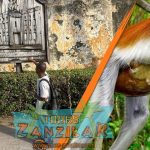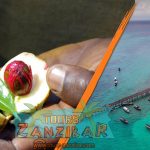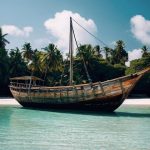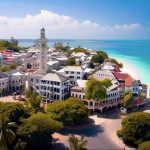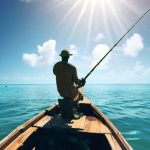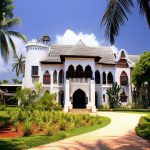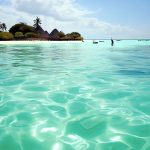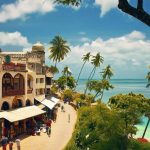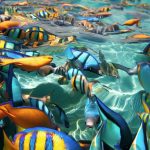Nestled off the coast of East Africa in the Indian Ocean, Zanzibar is a gem that beckons with its vibrant fusion of cultural histories and a treasure trove of wildlife both in its lush green jungles and beneath the azure waves. From the playful dolphins in the warm waters of Menai Bay to the rare Kirk’s red colobus monkeys amid the dense forests of Jozani, Zanzibar offers a unique and breathtaking biodiversity that is enchanting to nature lovers and adventurers alike.
In our comprehensive guide, Tours-Zanzibar.com will take you on a journey through these mesmerizing landscapes, revealing the best spots to witness the archipelago’s rich marine and terrestrial life. Whether you are an intrepid explorer aiming to delve deep into the natural habitats or a wildlife enthusiast looking forward to a serene experience observing some of the most fascinating species on the planet, Zanzibar has something to spellbind everyone. Prepare to be immersed in a world where nature’s ongoing symphony is seen and heard, enriching your understanding and appreciation of this extraordinary island paradise.
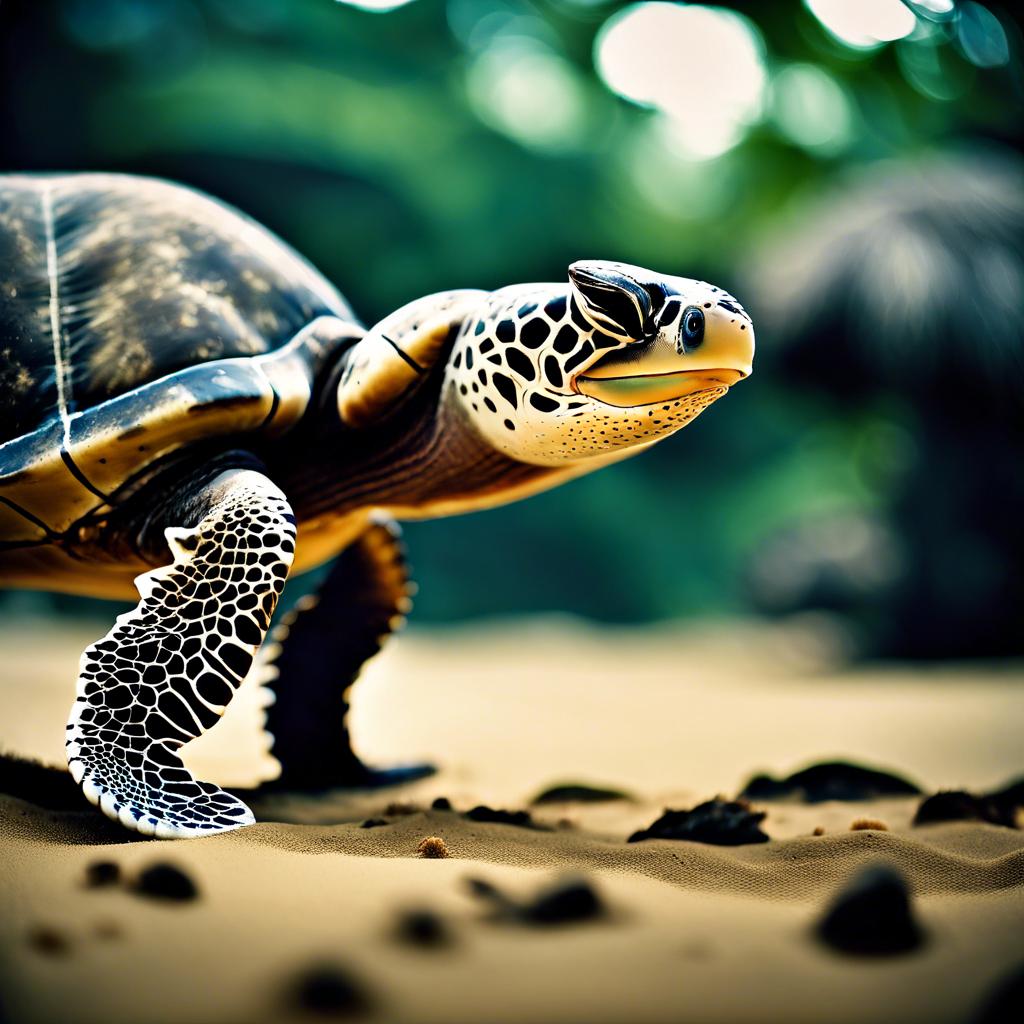
Exploring Zanzibar’s Coral Reefs: A Diverse Ecosystem
Unveiling the Underwater Paradise
Zanzibar’s underwater realm is as vibrant and varied as the culture onshore. The coral reefs surrounding this East African island are bustling with life and are integral to the marine biodiversity of the Indian Ocean. With Tours-Zanzibar.com, adventurers can plunge into the crystal-clear waters to witness the spectacle of coral structures teeming with exotic marine life. From the delicate sea fans swaying with the currents to the robust staghorn corals, each dive offers a kaleidoscope of colors and forms.
Highlights of Zanzibar’s Marine Flora and Fauna
- Colorful Coral Gardens: Home to more than 350 species of marine algae and corals, these gardens form the backbone of the underwater ecosystem, offering food and shelter to numerous creatures.
- Rare Marine Species: Depending on the season, divers might encounter enigmatic sea turtles, playful dolphins, and even the elusive whale sharks, which frequent these waters.
- Vibrant Reef Fish: The reefs of Zanzibar are a haven for over 500 species of fish, including the flamboyant clownfish, majestic angelfish, and elusive moray eels.
Conservation Efforts in Action
While exploring these underwater wonders, it’s impossible to overlook the efforts to preserve this fragile environment. Reef conservation projects and sustainable tourism practices are essential and are promoted by Tours-Zanzibar.com to ensure that these waters remain vibrant and teeming with life for future generations. By choosing responsible tour operators, visitors contribute positively and experience the natural beauty of Zanzibar in the most ethical manner possible.
| Activity | Description |
|---|---|
| Snorkeling | Engage directly with teeming reef life in shallower, vibrant coral systems. |
| Scuba Diving | Explore deeper reef structures and potentially encounter larger marine species. |
| Conservation Tours | Participate in reef restoration and learn about marine conservation directly from experts. |
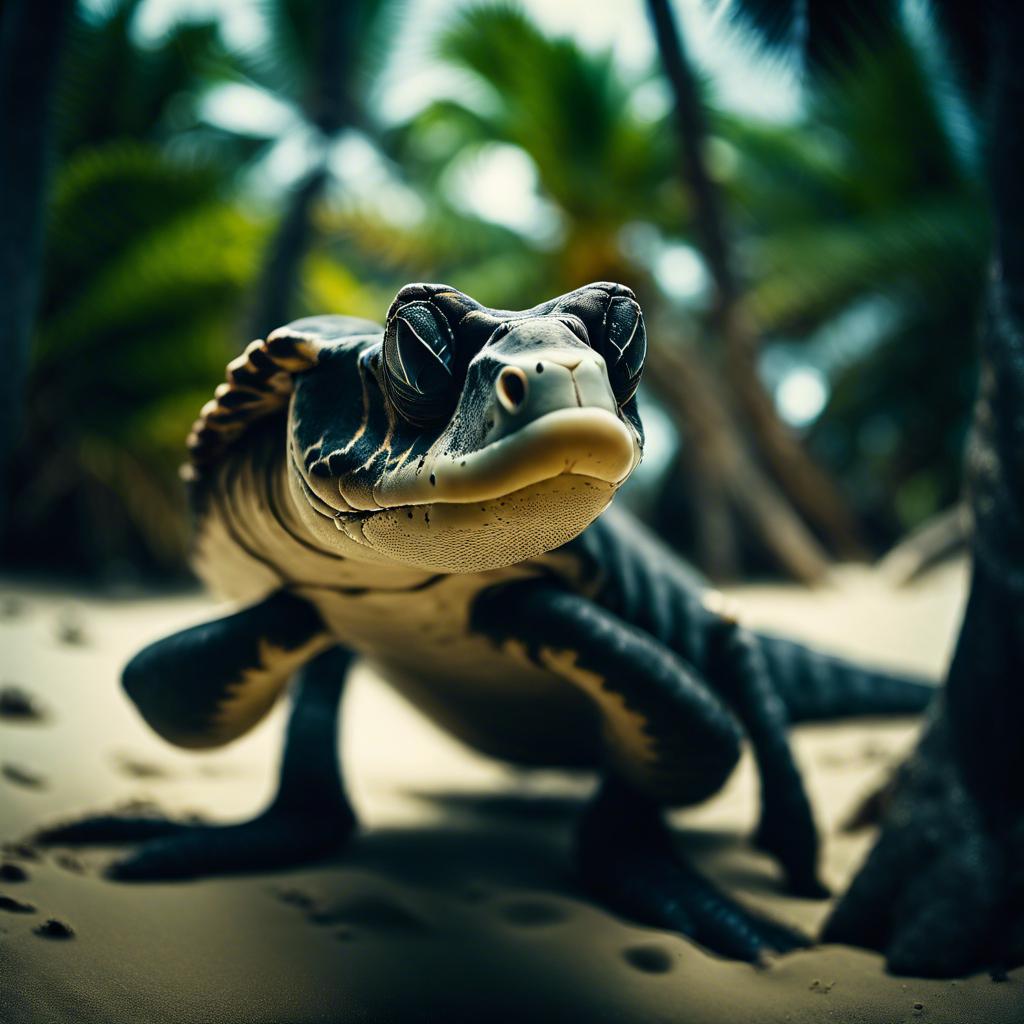
The Jozani Chwaka Bay National Park: A Conservation Success
A Testament to Conservation Efforts
Located in the heart of Zanzibar, the Jozani Chwaka Bay National Park stands as a beacon of biodiversity and successful conservation strategies. The park is most famous for its resident Red Colobus monkeys, an endangered species that has thrived under the protection efforts. These charming creatures are a delight to observe and play a crucial role in the ecological balance of the park’s mangrove forests and coral reefs.
Flora and Fauna Highlights
- Mangrove forests – These vital ecosystems are a refuge for wildlife and a natural barrier protecting the island’s coastlines.
- Coral reefs—The coral reefs in the park are vibrant underwater habitats home to a diverse array of marine life.
- Native bird species—Birdwatchers can spot various endemic and migratory birds, which add a colorful spectacle to the lush green landscapes.
In addition to its natural beauty, the park is a living classroom offering insights into the delicate balance of tropical ecosystems. The variety of habitats, including swamp forests, salt marshes, and dunes, provide tourists with a comprehensive tour of Zanzibar’s natural wealth. Initiatives by Tours-Zanzibar.com include guided eco-tours, which educate visitors on the importance of conservation while showcasing the park’s stunning scenery and wildlife.
Conservation Achievements
| Year | Milestone |
|---|---|
| 2005 | Designation as a National Park |
| 2012 | Successful breeding program for Red Colobus monkeys |
| 2019 | Launch of the Mangrove Restoration Project |
The ongoing commitment to the conservation of Jozani Chwaka Bay National Park ensures it remains a sanctuary for wildlife and a vibrant tourist destination. Through the conscientious efforts of local conservators and support from visitors, the park continues to be a testament to nature’s resilience when given a chance to thrive.
Mangrove Forests of Zanzibar: Crucial Coastal Protectors
Mangrove Forests as Ecological Sentinels
In the serene archipelago of Zanzibar, the mangrove forests are a vital ecological barrier against coastal erosion and extreme weather, bolstering the shoreline while nurturing a unique biodiversity. These dense green buffers are crucial habitats for many species, from the ubiquitous crabs to the secretive mudskippers. What makes these habitats exceptional is their role in carbon sequestration—mangroves capture carbon dioxide far more effectively than terrestrial forests, making them pivotal in the fight against climate change.
Biological Richness and Conservation Efforts
The root systems of mangrove trees are fascinating for their complex, snorkel-like structures and for how they support a life network. These submerged labyrinths provide a haven for fish nurseries. At the same time, the overhead canopy is a bustling hub for various bird species, such as the majestic Fish Eagle and the colorful Kingfisher. Observing these ecosystems through a guided tour with Tours-Zanzibar.com offers visitors a chance to understand the delicate interdependence between these organisms.
- Mangrove Conservation: Ongoing efforts in Zanzibar include reforestation projects and educating local communities on the importance of mangroves.
- Wildlife Protection: Regulations protect the broader ecosystem, helping to maintain balance and prevent further degradation.
As we delve deeper into understanding these complex underwater forests, it becomes clear that the health of Zanzibar’s mangroves is intrinsically linked to the overall vitality of the region’s marine and terrestrial ecosystems. Venturing through these forests, whether by kayak or on foot, provides a profound reminder of nature’s interconnectedness and our role in preserving it.
Zanzibar’s Butterfly Centre: Promoting Biodiversity and Education
A Sanctuary of Fluttering Beauty
As part of the enthralling ecotourism experiences offered by Tours-Zanzibar.com, the Butterfly Centre presents a unique opportunity to immerse oneself in the vibrant world of insects. Situated in the heart of a lush tropical garden, this center is a habitat for an astonishing variety of butterflies, making it one of the most extensive butterfly exhibits in East Africa. Visitors are greeted with the dazzling spectacle of hundreds of colorful butterflies fluttering freely, offering a breathtaking interaction with nature in its most delicate form.
Conservation through Education
The center is a space of natural beauty and a hub for education and biodiversity conservation. Knowledgeable guides enlighten visitors about butterflies’ fascinating life cycles and their critical role in the ecosystems. Here are some vital educational topics covered at the center:
- The Butterfly Lifecycle: From egg to caterpillar, chrysalis, and finally to butterfly, visitors gain insights into each transformative phase.
- Environmental Impact: Educative talks on how butterflies are indicators of ecological health and their significance in pollination.
- Conservation Efforts: Discussion on local and global conservation strategies and the role of sanctuaries in preserving species.
In addition to education, the Zanzibar Butterfly Centre participates in local conservation initiatives by breeding native butterfly species and promoting habitat restoration. This enhances the local biodiversity and provides a sustainable income source for the surrounding communities through ecotourism.
Marine Life Encounters: Best Spots for Snorkeling and Diving
Discover Underwater Paradise
If you want ecotourism or an underwater escapade, Zanzibar offers some of the clearest, most vibrant snorkeling and diving spots teeming with marine life. From the novice snorkeler to the experienced diver, the crystal-clear waters surrounding this beautiful island promise remarkable encounters with diverse aquatic creatures and breathtaking coral reefs.
The Mnemba Atoll
Located off the northeast coast of Zanzibar, the Mnemba Atoll is an exclusive snorkeling and diving site. This protected area is famous for its shallow coral reefs, creating a perfect, serene spot for beginners. More adept divers can explore deeper into the blue waters to catch sight of turtles and playful dolphins that frequent the currents here.
- Popularity: High, especially during peak seasons.
- Marine Life: Dolphins, moray eels, sea turtles, and tropical fish.
- Best Time to Visit: The waters are at their most apparent between July and March.
Kizimkazi Reef
For those intrigued by historical and ecological sites, Kizimkazi offers a thriving marine ecosystem and a captivating history connected to its coastal village. The reef is home to numerous species of fish and intricate coral formations. Reef sharks and giant groupers are among the larger species that may grace your presence with some luck.
- Popularity: Moderately visited, quieter than Mnemba Atoll.
- Marine Life: Colorful coral gardens, reef sharks, giant groupers.
- Best Time to Visit: Late afternoon for the best natural lighting conditions and fewer crowds.
With Tours-Zanzibar.com, every dive and snorkel adventure is a unique opportunity to connect deeply with nature’s underwater ballet. Our excursions go beyond just witnessing and offer a chance to learn about the conservation of these beautiful marine environments, ensuring they remain vibrant and healthy for years to come.
Endemic Species and Where to Find Them
Discovering Zanzibar’s Unique Residents
As you embark on your Zanzibar adventure with Tours-Zanzibar.com, encountering the island’s unique species that thrive nowhere else on the planet is nothing short of magical. The rich biodiversity in the marine and terrestrial environments is a testament to the island’s distinct ecological conditions.
Marine Biodiversity Hotspots
The coral reefs circling the Zanzibar archipelago are both majestic and vital, supporting an extraordinary number of species. Snorkeling or diving here, you might spot the endemic Zanzibar Butterflyfish darting amidst the corals with its vibrant yellow stripe and stark black eye band. Furthermore, the slender Zanzibar Wrasse, known for its elongated body and dazzling color patterns, frequently graces the reefs. These marine habitats also serve as critical breeding grounds for the endangered Green Turtle, found predominantly around the islands of Mnemba Atoll.
Terrestrial Treasures
On land, the Jozani Chwaka Bay National Park is a sanctuary for the endemic Red Colobus Monkey, recognized for their striking red backs and long white tails. These monkeys are a symbol of Zanzibarian wildlife and play a crucial role in the local ecology by aiding in seed dispersal. Bird enthusiasts will be thrilled to encounter the Zanzibar Red Bishop, a small bird with fiery red and black plumage often flitting about the park’s grasslands.
Embarking on a journey through Zanzibar’s diverse ecosystems allows for an in-depth understanding of why these environments must be sustained. By choosing Tours-Zanzibar.com, you contribute to the ongoing conservation efforts that help preserve such unique species and their habitats. Ecotourism in Zanzibar: Practices and Recommendations
Embracing Eco-Friendly Approaches
Zanzibar’s natural splendor offeEcotourismnting playground for eco-tourists. Guided by a commitment to sustainability, Tours-Zanzibar.com employs practices that ensure minimal environmental impact while maximizing visitor enjoyment. Their tours employ local guides knowledgeable about Zanzibar’s ecosystems and provide insightful narratives about the local wildlife and habitat conservation efforts. By prioritizing walking and sailing over motorized transport, these tours also help reduce carbon footprints and encourage the preservation of both marine and terrestrial environments.
Guidelines for Responsible Travel
To partake responsibly in the beauty of Zanzibar’s natural environments, tourists are encouraged to follow these eco-friendly guidelines:
- Avoid disturbing wildlife and adhere strictly to the guided paths in wildlife reserves.
- Use reef-safe sunscreen to protect Zanzibar’s vibrant coral reefs while snorkeling or diving.
- Participate in local conservation activities, such as beach clean-ups or educational tours, to better understand and appreciate the local ecosystem.
Planning Your Eco-Tour
For those interested in planning their visit, here’s a brief overview of what Tours-Zanzibar.com offers:
| Tour | Focus | Duration |
|---|---|---|
| Jozani Forest Expedition | Terrestrial Wildlife | Half-Day |
| Mnemba Island Snorkeling | Marine Life | Full-Day |
| Kizimkazi Dolphin Tour | Marine Mammals | 2-3 Hours |
Each outing aims to educate and inspire, offering close encounters with the archipelago’s diverse wildlife while advocating for its protection and survival. By choosing an eco-tour, visitors contribute positively to the local community and aid in preserving Zanzibar’s unique habitats.
Future Outlook
In conclusion, the wildlife of Zanzibar presents a fascinating array of marine and terrestrial species that captivate the interest of biologists, conservationists, and eco-tourists alike. The island’s unique geographical placement and diverse habitats provide sanctuary to numerous creatures that are as rare as beautiful. From the vibrant coral reefs teeming with colorful fishes to the dense forests sheltering the enigmatic Zanzibar red colobus monkey, the region serves as a vital repository of biodiversity. While exploring these natural wonders, the responsibility to protect these environments and the opportunity to learn from them becomes strikingly clear.
As Zanzibar continues to balance tourism demands with conservation efforts, understanding and supporting local initiatives that protect wildlife habitats will be crucial. By fostering sustainable practices, we can ensure that Zanzibar’s incredible wildlife thrives for generations to come, continuing to offer invaluable lessons on biodiversity, conservation, and the interconnections of Earth’s ecosystems.




